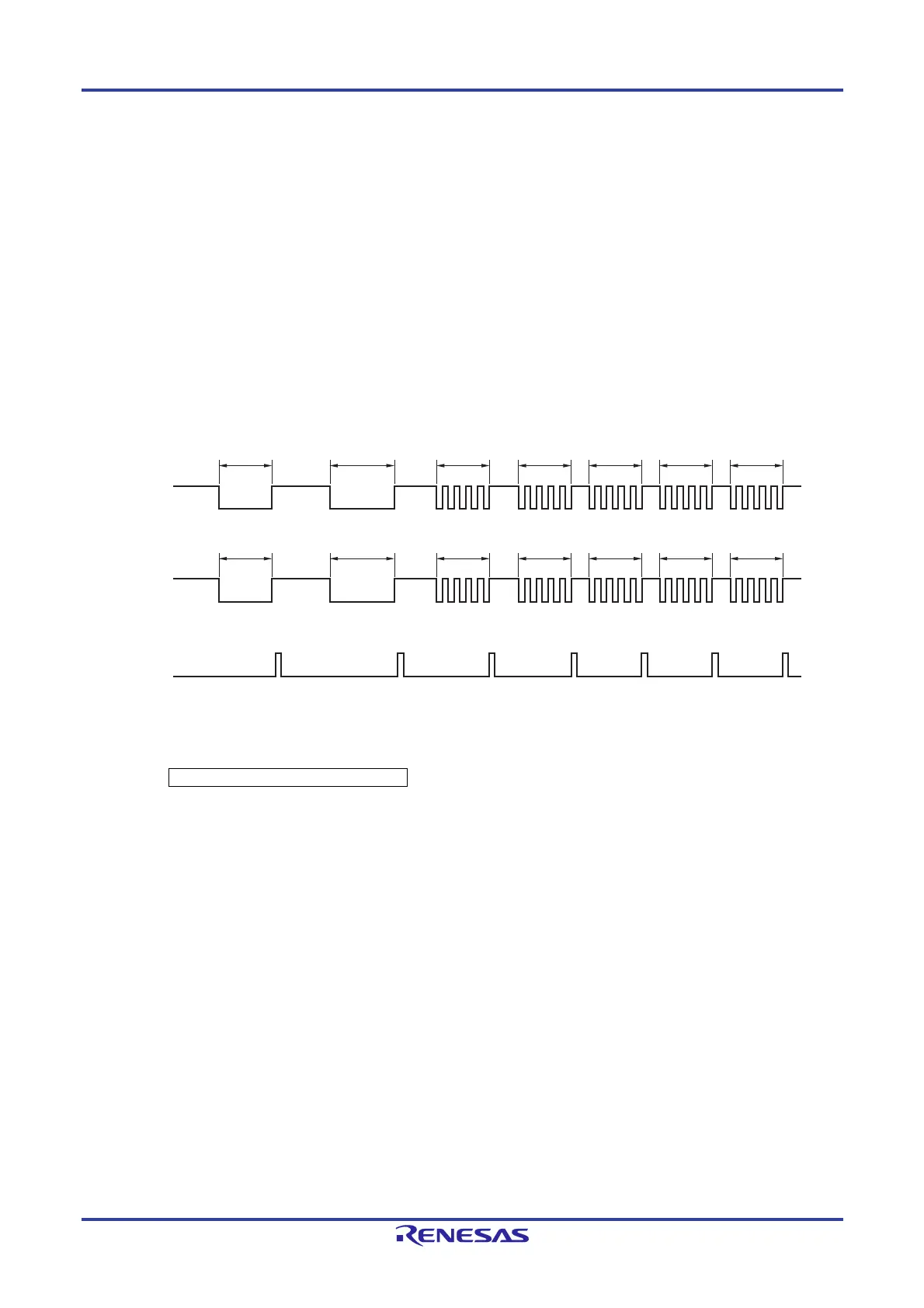RL78/F13, F14 CHAPTER 15 SERIAL ARRAY UNIT
R01UH0368EJ0210 Rev.2.10 983
Dec 10, 2015
LIN stands for Local Interconnect Network and is a low-speed (1 to 20 kbps) serial communication protocol designed to
reduce the cost of an automobile network.
Communication of LIN is single-master communication and up to 15 slaves can be connected to one master.
The slaves are used to control switches, actuators, and sensors, which are connected to the master via LIN.
Usually, the master is connected to a network such as CAN (Controller Area Network).
A LIN bus is a single-wire bus to which nodes are connected via transceiver conforming to ISO9141.
According to the protocol of LIN, the master transmits a frame by attaching baud rate information to it. A slave receives
this frame and corrects a baud rate error from the master. If the baud rate error of a slave is within ±15%, communication
can be established.
Figure 15-138 outlines a transmission operation of LIN.
Figure 15-138. Transmission Operation of LIN
Notes 1. Data of 80H is transmitted.
2. A break field is defined to have a width of 13 bits and output a low level. Where the baud rate for main transfer
is N [bps], therefore, the baud rate of the break field is calculated as follows.
(Baud rate of break field) = 9/13 × N
By transmitting data of 00H at this baud rate, a break field is generated.
3. INTST0 is output upon completion of transmission.
Remark The interval between fields is controlled by software.
LIN Bus
Wakeup signal
frame
8 bits
Note 1
55H
transmission
Data
transmission
Data
transmission
Data
transmission
Data
transmission
13-bit BF
transmission
Note 2
Break field
Sync field Identification
field
Data field Data field Checksum
field
T
X
D0
(output)
INTST0
Note 3

